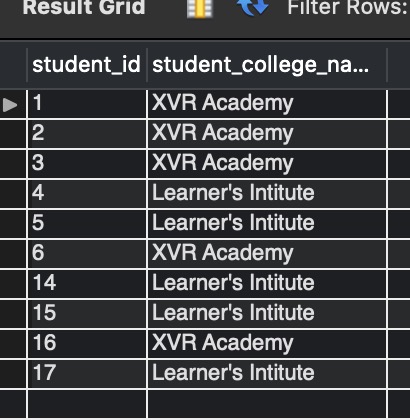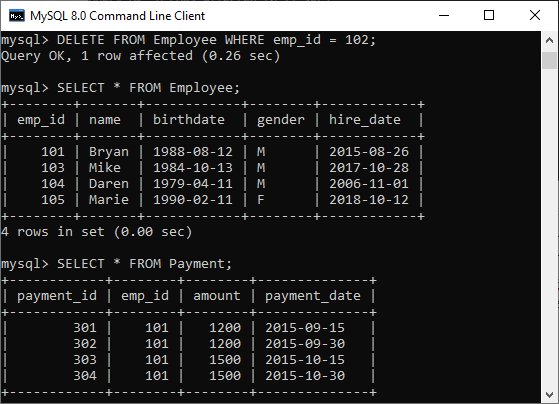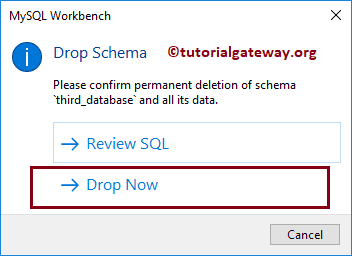

In the second terminal, try to drop the test database and you will get the error message that the test database is being used by another user. Using the option -f or –force with dropdb command or FORCE with DROP DATABASE to drop the database, it will terminate all existing connections with the database.

Next Topic : MySQL DROP Database How do I delete a data database in SQL? If we verify the schemas tab, we will not find the testdb_copy database on the list anymore. Since the database testdb_copy is an empty database, the number of affected rows is zero. The below screen explains it more clearly: Once we click the execute button, MySQL will return the below message indicating that the database is dropped successfully. Once we sure, click the Execute button to execute the statement. If we want the safe deletion of the database, it is required to choose the Review SQL option.

And if we choose Drop Now option, the database will be deleted permanently. If we select Review SQL, it will produce the statement that will be executed. When we click the Drop Schema option, MySQL Workbench displays a dialog box to confirm the deletion process. If we want to delete a database, right-click the database that you want to remove, for example, testdb_copy under the Schema menu and select Drop Schema option, as shown in the following screen. Go to the Navigation tab and click on the Schema menu, Here, we can see all the previously created databases. It will show the following screen: Now do the following steps for database deletion: 1.
MYSQL DELETE USER FORCE HOW TO
How to select and drop a database in MySQL?ĭROP Database using MySQL Workbench – To drop a database using this tool, we first need to launch the and log in with the username and password to the MySQL server.

2.1 How do I DELETE a SQL database in single user mode?.2 How to delete multiple database in MySQL?.1.3 Which command is used to delete database?.1.2 How do I DELETE a local MySQL server?.1.0.1 How do I delete a data database in SQL?.1 How to select and drop a database in MySQL?.This optimized blog post now features relevant keywords in headings, a concise title, and an informative meta description for better SEO performance. Conclusion :īy following this step-by-step guide to uninstall and reinstall MySQL on Ubuntu, you can resolve issues caused by MySQL server updates and ensure a smooth experience. You can also try performing step 2 (update and upgrade) before going through steps 1 (uninstall) and 3 (reinstall). If necessary, stop the MySQL service using the service mysql stop command. If you still encounter issues after following these steps, check for any running MySQL processes on your server using the top command.
MYSQL DELETE USER FORCE INSTALL
Now that you have removed MySQL and updated your system, you can proceed to reinstall MySQL: sudo apt-get install mysql-server
MYSQL DELETE USER FORCE UPDATE
In this blog post, we’ll guide you through the process of uninstalling and reinstalling MySQL on Ubuntu.įollow these steps to uninstall MySQL completely: sudo apt-get remove -purge mysql*īefore reinstalling MySQL, it’s essential to update and upgrade your system: sudo apt-get update One such issue occurs when the apt setup hangs, leaving your server unresponsive for an extended period. Upgrading Ubuntu can sometimes lead to unexpected issues with MySQL server updates.


 0 kommentar(er)
0 kommentar(er)
